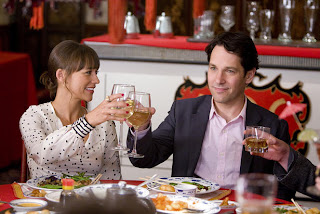
He was troubled yet brilliant, eccentric yet endearing, maddeningly difficult yet utterly irreplaceable. He was a flawed character -- in particular, his treatment of his first wife and child left quite a bit to be desired -- yet he brightened the world with his music and idealism to an extent that few people of any degree of virtue can approach. He could be bitterly harsh to those closest to him, yet on a public level he possessed a special kind of charisma that graces this planet once in a century, if we're lucky. To say the very least,
John Lennon was a man of contradictions. Philip Norman, whose 1981 book
Shout! The Beatles in Their Generation is considered by many to be the definitive biography of the Fab Four, decided that Lennon by himself warranted a thorough and objective analysis. He took on the challenge of digging deep into Lennon's life to try to make the many contradictions and complexities understandable to his readers. The result is
John Lennon: The Life, a massive volume containing over 800 pages of text and leaving absolutely no stone unturned.
Norman's work is strongest at the very beginning of the story, detailing the elaborate and somewhat bizarre power struggle that played out between John's parents, Alfred and Julia, and Julia's oldest sister Mimi. Alfred is usually dismissed as the father who left when John was young and didn't resurface until after John became famous, but the truth is more complicated. Julia's family never liked Alfred, and when Julia left Alfred for somebody else, Alfred was effectively pushed out of the way. So, eventually, was Julia -- to make a long story short, Mimi found her too irresponsible and took John off her hands. Mimi was a very controlling figure, at least on the surface, but she had her own secrets, and her determination to raise John to be a proper, respectable middle-class Englishman didn't quite work out the way she planned. The free-spirited Julia still saw John regularly, and encouraged his interest in music as much as Mimi discouraged it. But Julia's tragic death when John was 17 left a scar that would affect everything John did afterwards.
The book goes on to describe the Liverpool rock scene, in which The Beatles were initially very minor players. I knew that their trips to Hamburg played a pivotal role in their development, but Norman makes it clear that The Beatles were really nobodies before their first German excursion, and that everything changed for them in Liverpool on their return. As for the rest of The Beatles' story, I would imagine that anybody interested enough in John Lennon to read an 800-page book on him already knows the details. Norman comments on John's musical contributions, and dwells on his complicated relationship with manager Brian Epstein (yes, John had complicated relationships with a lot of different people), but doesn't really add anything new here. The side story of John's lack of fidelity and genuine love for his first wife Cynthia and indifference towards his son Julian makes for more revealing, if somewhat disheartening, reading.
Of course, the most important figure by far in the last twelve years of Lennon's life was Yoko Ono. Again, Norman reveals that the story of John and Yoko's romance is not as simple as it's generally made out to be. If anything, John was overly controlling of Yoko; it certainly wasn't the other way around. Norman gives Yoko a rare and refreshing sympathetic treatment. She was an avant-garde artist with a sense of the bizarre and whacky that meshed perfectly with John's. While John never wanted Cynthia around when he was busy being a Beatle, he insisted that Yoko never leave his side. The low points in the relationship get aired out in the book as well. Even though John did love her, it would never be easy being his wife, and the pressure from that (and the constant spiteful accusations of breaking up The Beatles that regrettably continue to this day) caused Yoko to send John away in 1973. For all of John's misadventures during the "Lost Weekend" that took up most of 1974 (Norman goes over a few), John remained determined to win Yoko back, and eventually succeeded. Their reunion was followed by the birth of Sean, and then by John obtaining his American citizenship after the government had tried for years to get him thrown out of the country.
Things may not have been absolutely perfect at the Dakota for the next five years, but John was happy and at peace with himself for the first time in his life. Unfortunately, we all know how the story ends.
I know that Yoko ultimately distanced herself from the book, feeling that Norman had been mean to John. One one hand, I can see why she feels that way; while it was necessary for Norman to tell the story warts and all, he did discuss some of the warts in microscopic detail. But at the same time, I feel that the book is ultimately sympathetic, as Norman intends it to be taken. My biggest criticism would be with Norman's frequent analyses of Lennon's songs. I agreed with him sometimes and disagreed with him other times, which is fine, but Norman injected too much of his subjective opinions into the book at places where a more detached tone would have better served.
Having said that, I found
John Lennon: The Life on the whole to be very engrossing and compelling. Sure, the size of the book will scare away some readers with only a casual interest in the subject matter, but if you want to know everything there is to know about John Lennon, Philip Norman's book is the one to read.
Overall grade: A-
reviewed by Scott































